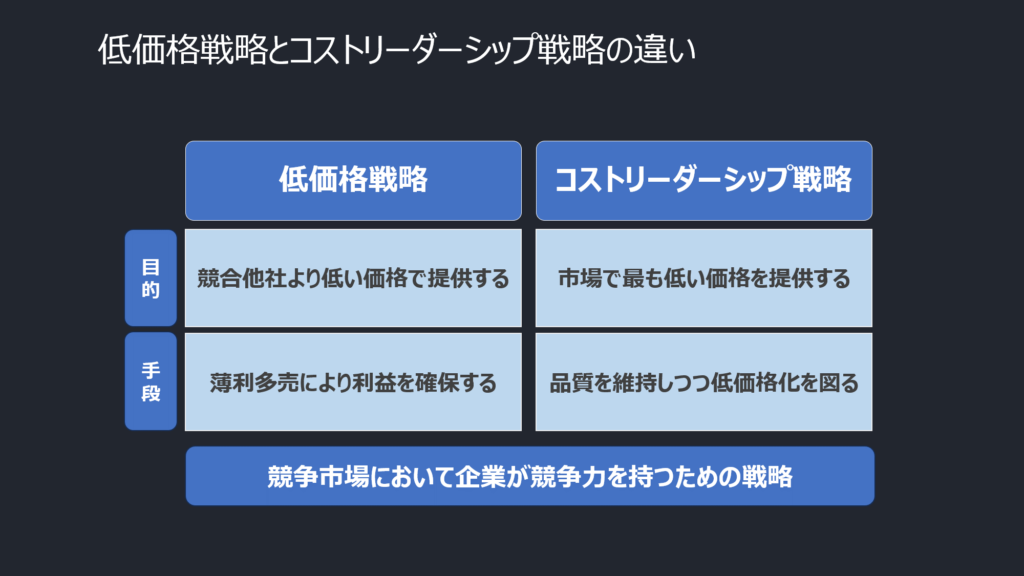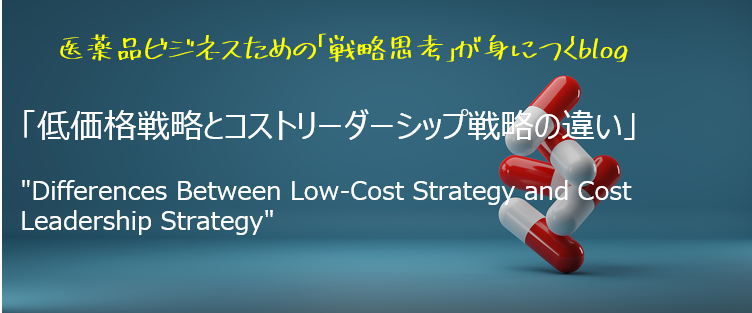
低価格戦略とコストリーダーシップ戦略は、両方とも競争市場において企業が競争力を持つための戦略ですが、微妙な違いがあります。
低価格戦略は、製品やサービスを競合他社よりも低い価格で提供することを目指す戦略です。
これによって、価格敏感な顧客を引きつけ、大量の顧客を獲得することを狙います。
単位あたりの利益が低いかもしれませんが、大量の売上を通じて利益を確保しようとします。
コストリーダーシップ戦略は、市場で最も低い製品価格を提供することを目指す戦略です。
低価格を実現するために、プロセス改善や効率化を通じてコストを削減し、品質も維持しつつ競合他社よりも低い価格を実現します。
すなわち、低価格戦略は主に価格を抑えることにフォーカスし、コストリーダーシップ戦略は低価格を提供しながらも品質と競争力を維持する総合的な競争力を追求する点が違いです。
“Differences Between Low-Cost Strategy and Cost Leadership Strategy”
Both the low-cost strategy and cost leadership strategy are approaches that companies employ to gain competitiveness in a competitive market, but they have subtle distinctions.
The low-cost strategy aims to offer products or services at prices lower than those of competing firms. This strategy seeks to attract price-sensitive customers and capture a large customer base. While the profit per unit may be lower, the objective is to secure profits through high sales volumes.
On the other hand, the cost leadership strategy aims to provide the lowest product prices in the market. To achieve this, it focuses on cost reduction through process improvements and efficiency enhancements, while maintaining quality. In essence, the cost leadership strategy not only concentrates on reducing prices but also pursues an all-encompassing competitiveness by delivering both low prices and quality that surpasses competitors.
In summary, the distinction lies in the fact that the low-cost strategy primarily centers on price reduction, whereas the cost leadership strategy seeks to maintain both quality and competitiveness while offering lower prices.

